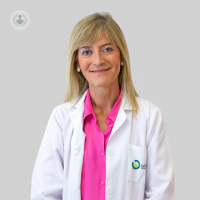Ginefiv: A Bet on the latest advances in assisted reproduction
Written by:Since the birth of the first child conceived through assisted reproduction technique have already spent more than 30 years. During this time, the great advances in science have allowed the incorporation of increasingly sophisticated techniques and individualized treatment of sterility and infertility, enabling each year thousands of couples to use them to fulfill their dream of parenting.
The coordinator of the Ginefiv Gynecology Clinic, Dr.. Victoria Verdu explains the various developments that have led to the world come every year 16,000 children through assisted reproduction techniques.
¿What were the main developments in assisted reproduction in recent years
?
Some of the most important developments in recent years have come driven by the change in the processes of oocyte freezing. The new vitrification techniques introduced in 2006 have made it possible that today we can preserve the fertility of women who, due to illness or personal reasons, can not take shape at a given time, but want to keep their ova to try pregnancy later. This is possible due to the vitrification of oocytes.
In the case of male infertility,¿improvements are being applied
?
Half of the difficulties conceiving a child are caused by male problems. During recent years, we have experienced dramatic improvements in the success rate of treatment of male fertility. Ginefiv progress has pointers, as the so-called MACS to differentiate healthy and optimal sperm for fertilization of the egg;or IMSI, a very sophisticated technique of sperm selection, introduced by Ginefiv pioneering way in 2009 and to select sperm without defects or alterations less, thereby increasing the rates of implantation and pregnancy. The IMSI employs approximately five times more powerful than the usual one IVF laboratory microscope and is able to examine in detail each sperm.
¿Since culture and embryo selection have evolved
Many of the advances in assisted reproduction have been given by the improvements in culture conditions and embryo selection. While embryo culture media have improved outstandingly, also the technical progress as incubators with time-lapse technology have improved outcomes. It is incubation systems by which biologists can observe the evolution of the embryos from the moment fertilization occurs until its transfer to the mother's uterus, without having to check them out for. This creates a much more stable incubation is achieved, obtaining embryos of higher quality and thus higher pregnancy rates.
Among developed advances,¿, which stand out as the most avant-garde
From my perspective as a professional, I would highlight the advances in genetics in the field of reproductive medicine. The DGP is a method of prenatal diagnosis which aims to increase the chances of babies born without suffering chromosomal syndromes or hereditary pathologies.
This technique allows genetically examine embryos obtained through IVF in order to detect possible abnormalities before transferring them to the woman.
The DGP is suitable for couples who carry or suffer from diseases or chromosomal origin gene that can transmit to their offspring;for older women or have abortions of repetition;for patients with multiple IVF cycles have already been made without success, and couples of which only embryos obtained with morphological alterations.
GINEFIV: 25 A CHILDREN SHARING THE ILLUSION BY HAVING A CHILD
With over 25 years of experience, Ginefiv is a benchmark at national and European level in the field of reproductive medicine. His extensive experience and commitment to the best techniques of assisted reproduction with the maximum guarantees of quality, have enabled thousands of couples have met the great dream of parenthood.
Ginefiv has a multidisciplinary team of over 85 professionals from different specialties, under the direction of Dr. under Arenas. This makes it one of the largest and most comprehensive center services in Europe, able to offer the best treatment for assisted reproduction to each particular fertility problem.
Have a center of these features has allowed it Ginefiv recently awarded the Prize for Best Health Institution. Since its inception it has opted for being at the forefront and has been a pioneer in the development of assisted reproductive techniques to provide the latest advances. As a result, it has achieved great milestones as the birth of the first baby from frozen in Madrid in 1988 embryos.



